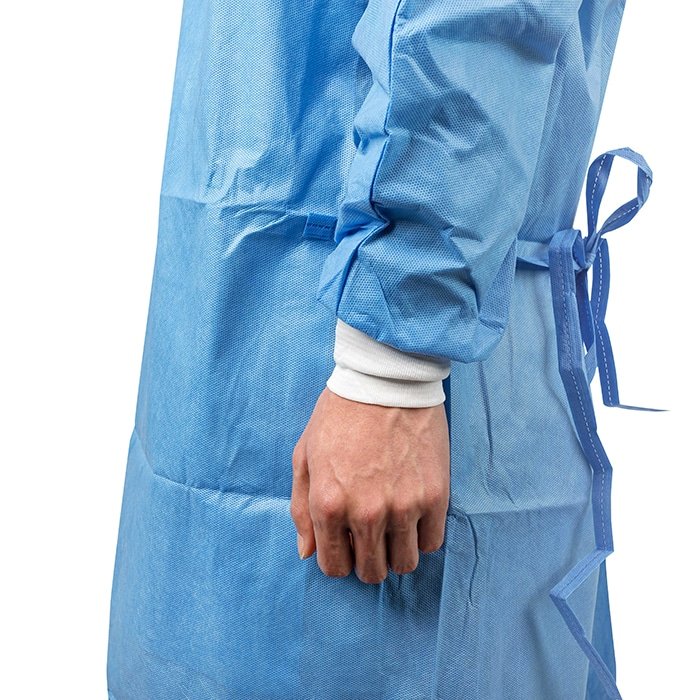Surgical gowns come in different styles and materials. You want to make sure you are wearing the right type of surgical gown for the type of surgery you are having. In this blog post, we will discuss the different types of disposable surgical gowns and how to choose the right one for you!
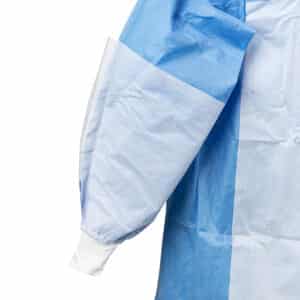
During invasive procedures, both the patient and the healthcare team are at risk of exposure to infectious agents through pathogen penetration of surgical gowns. Therefore, healthcare professionals should be aware of the relevant standards, guidelines and professional recommendations regarding surgical gowns. With this knowledge, they can better select the appropriate gown; thereby reducing exposure to blood, body fluids and other potentially infectious materials.
What is disposable surgical gown
Surgical gowns serve as a two-way protection during surgery. First, the gown establishes a barrier between the patient and the wearer, reducing the probability of the medical staff coming into contact with potential sources of infection such as the patient’s blood or other body fluids during the surgery; Second,They may also be used to prevent the gown wearer from transferring microorganisms that could harm vulnerable patients, such as those with weakened immune systems. Therefore, the barrier function of surgical gowns is considered to be the key to reduce the risk of infection during surgery.In addition, disposable surgical gowns are strictly sterile and used in specialized operating rooms for invasive treatment of patients.

Which type of surgical gown is the one you need
There are many factors to consider when designing garments to ensure the safety of perioperative personnel and patients and to avoid cross-contamination during surgery. There are a number of organizations that set performance standards for different types of garments. The one that established what is recognized by the FDA as a consensus standard for surgical gowns and drapes is the Association for the Advancement of Medical Instrumentation (AAMI).
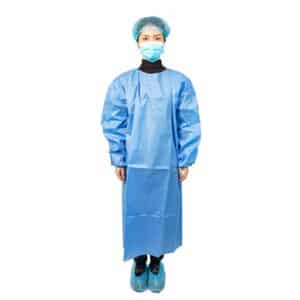
The “aami level Standard” (ANSI/AAMI PB70:2012) establishes performance standards for liquid barriers in critical areas of surgical gowns and drapes, the areas where OR personnel are most likely to come into direct contact with potentially infectious materials such as blood and body fluids. (Prevention of spread of body fluids)
And there’re 2 Types defined by EN 13795 for EU market.
Do your research – there are many different types of disposable surgical gowns available, so it’s important to know what you need before making a purchase.
The first step in choosing a disposable surgical gown is to do your research.. Some factors to consider include the type of procedure being performed, the level of protection needed, and the environment in which the procedure will be taking place.
Once you have a good idea of what you need, you can start narrowing down your options.
Finally, be sure to read the manufacturer’s instructions carefully before use. Follow the specific care instructions to help keep your gown in good condition and protect the wearer from exposure to infectious agents.
Different level criteria
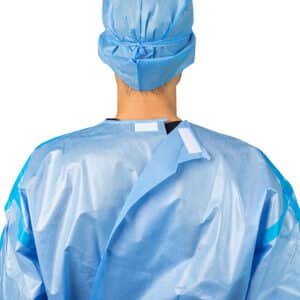
The ANSI/AAMI PB70 standard has 4 levels of fluid barrier protection, with Level 1 being the lowest level of protection and Level 4 being the highest.And there’re 2 Types defined by EN 13795 for EU market.
Level 1 : Minimal risk, to be used, for example, during basic care, standard isolation, a cover gown for visitors, or in a standard medical unit.
Level 2 : Low risk, to be used, for example, during the blood draw, suturing, in the Intensive Care Unit (ICU), or a pathology lab.
Level 3 : Moderate risk, to be used, for example, during the arterial blood draw, inserting an intravenous (IV) line, in the Emergency Room, or for trauma cases.
Level 4 : High risk, to be used, for example, during long, fluid intense procedures, surgery, when pathogen resistance is needed, or infectious diseases are suspected (non-airborne)
EN 13795 is a European recognized standard of quality and conformance to testing, manufacturing and performance specifications for single-use and reusable covering products.
EN 13795 specific performance requirements for gowns. In addition to these tests, EN 13795 requires other characteristics be tested, including microorganisms and particulate matter cleanliness, linting, bursting strength (dry and wet), and tensile strength (dry and wet). However, performance requirements for these characteristics are the same for both standard-performance and high-performance gowns, and critical and less-critical areas.
The categorizes products by performance type:
Standard Performance : Non-reinforced or fabric-reinforced for low to medium risk of exposure
High Performance : Poly-reinforced for high risk of exposure
Selecting the suitable material
It is important to consider the needs of your particular procedure when selecting a material for your disposable surgical gown.
The material of disposable surgical gown is usually made by non woven material-sms,smms,smmms. \
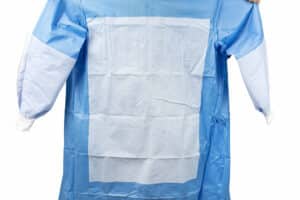
SMS, SMMS and SMMMS are all composite nonwovens, which are a combination of spunbond and meltblown. The spunbond layer (Spunbond) consists of continuous filaments, which have good breaking strength and elongation. Meltblown layer (Meltblown) consists of continuous ultra-fine fiber, which has good barrier effect on moisture, bacteria, dust, etc. It is made entirely of 100% polypropylene fiber as raw material, and is formed by a bacteria-blocking layer (M) and two stretch-resistant layers (S).
SMMS covers all the properties of SMS and greatly expands the performance of SMS: bacterial barrier, hydrostatic pressure, strength, uniformity, softness, application area. SMMMS can replace cotton fabric fabric, soft hand, delicate and excellent skin friendliness. Disposable surgical gowns are mostly made of this material, and you can choose different materials for surgical gowns according to the place of use and the quality index you need to achieve.
Of course, disposable gowns also can be made by other non woven materials such as PP, PP+PE, and plastic materials like CPE, PE. Most isolation gowns are made by these materials, and they also can meet AAMI PB70:2012 standard.
Choose the correct size
Choose a size that will fit you comfortably – most gowns come in small, medium, and large sizes

When selecting a disposable surgical gown, be sure to choose a size that will fit you comfortably. Most gowns come in small, medium, and large sizes, so be sure to select the appropriate size for your body. The fit of a surgical gown is fundamental to barrier protection and overall performance. For example, surgical gowns that are too tight or too small can restrict movement or fail to adequately cover the wearer. If too large, the extra material may interfere with effective movement.
If the gown is too tight or too loose, it will not provide the level of protection you need. Be sure to try on the gown before purchasing it to ensure a comfortable fit.
Comfort is important
Make sure the gown is comfortable to wear – you don’t want to be distracted during surgery by an uncomfortable garment
The comfort of surgical gowns is mainly related to softness and breathability. Due to the different surgeries, there are long and short periods of time to wear the surgical gown, and some doctors wear it for a long time, which requires good breathability of the gown so as to ensure the comfort of the doctor during the surgery.
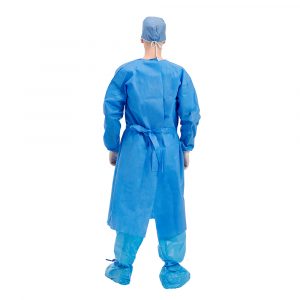
Other factors to consider when choosing disposable Surgical Gowns
In addition to the questions outlined above, it’s also very important to consider whether you need a disposable surgical gown. Due to a heightened risk of contamination, critical protection zones on Surgical Isolation Gowns include all areas except the bindings, cuffs, and hems. For non-isolation Surgical Gowns, the critical zones of protection only include the front of the body from the shoulder to the knees and the arms from the elbow to wrist.

Other considerations include Gown flammability, important for oxygen enriched operating rooms, as well as lint generation, resistance to tears, comfort, and environmental friendliness.
Wuhan Youfu company is a professional supplier and manufacturer for disposable non woven and PE products.If you want to purchase related products, we are the best choice.

